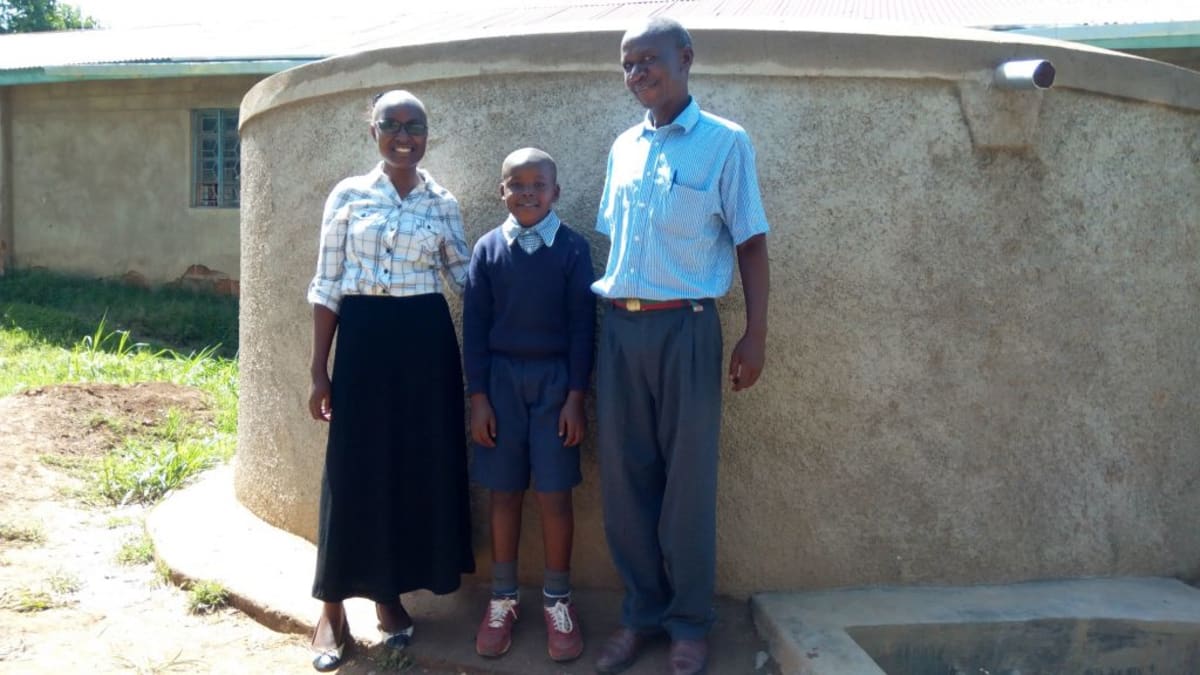This project is a part of our shared program with Western Water And Sanitation Forum (WEWASAFO). Our team is pleased to directly share the below report (edited for clarity, as needed).
Welcome to the School
A normal day at Shijiko Primary School begins early in the morning around 6:30am when pupils start arriving at school; some carrying firewood, and others carrying water. Soon after, each grade must begin their scheduled chores that have them cleaning the school grounds. Regular classes begin at 8am sharp.
The school has various programs that compliment its regular curriculum. It has a mentorship program which teaches pupils life skills. The school also provides sanitary napkins on a monthly basis to help girls maintain good hygiene and stay in school. The school is also unique with a feeding program that has been successful since 2011. The program feeds all of the school's students from class one to class eight. Since its start in 2011, the mean score has increased from 259 to 302. In 2012, the school won a big trophy as a result of this feeding program, and the headteacher has been asked to teach topics like food hygiene and food harvesting to different schools.
Another amazing thing about the school is that it supports 55 orphans with uniforms, stationery, and reduced school fees.
With all of these successes, there are still many challenges - with many more that result from clean water scarcity.
Water Situation
There is one medium-sized plastic water tank connected to a gutter on school grounds. Even when full of fresh rainwater, this tank can come nowhere close to serving all 762 students, let alone support the feeding program the school has. That's why each student has to carry water from home every morning. Many struggle to balance this load with their books and homework, and arrive at school late, tired, and wet.
Once those containers are emptied, students must go back out to a protected spring in the community. When fetching water from the community spring, students must first line up and wait for locals to finish fetching water. Students may have to go on this trip to the spring more than once during a school day!
Furthermore, water is not stored properly when back at school. These containers of water, even if meant for drinking, are kept open and on the dusty ground. When students drink this water, they suffer from waterborne diseases like typhoid and cholera.
Sanitation Situation
There are six pit latrines. These are not in good working condition, for the holes are much too large and pose a risk to these small students. The door hinges do not close properly. The girls' toilets collapsed after heavy rains, so the teachers had to surrender two doors for the girls. There is a huge level of congestion at the female latrines that causes long waits, bad smells, and dangerous conditions. These girls are at high risk of infection.
Headteacher Susy Gwademba told us, "The toilets brought me shame in this school. Due to the heavy rains, they sunk rendering my girls vulnerable and at risk for using them and so we permanently closed them down. This forced teachers to surrender two of their doors to the girls so as to rescue the situation..."
There is only one hand-washing station available. Some students are infected with jiggers, and if something isn't done to control them then they will spread amongst the student body. There are some malnourished students, especially in the early education classes.
Plans: Hygiene and Sanitation Training and Hand-Washing Stations
Training will be held for two days. The facilitator will use PHAST (participatory hygiene and sanitation transformation), ABCD (asset-based community development), CTC (child to child), lectures, group discussions, and handouts to teach health topics and ways to promote good practices within the school. The CTC method will prepare students to lead other students into healthy habits, as well as kickstart a CTC club for the school. This CTC club will oversee the new facilities, such as hand-washing stations, and make sure they are kept clean and in working condition. The two hand-washing stations will be delivered to the school, and the club will fill them with water on a daily basis and make sure there is always a cleaning agent such as soap or ash.
Plans: VIP Latrines
Two triple-door latrines will be constructed with local materials that the school will help gather. Normally we give three doors to the girls while the other three serve boys, but it is likely administration will set them aside for girls so they no longer have to share with primary students. And with a new source of water on school grounds, students and staff should have enough to keep these new latrines clean.
Plans: Rainwater Catchment Tank
A 50,000-liter rainwater catchment tank will help alleviate the water crisis at this school. The school will also help gather the needed materials such as sand, rocks, and water from the spring for mixing cement. Once finished, this tank can begin catching rainfall that will be used by the school’s students and staff. Students will no longer be responsible to find enough water to carry to school every day.
We and the school strongly believe that with this assistance, standards will significantly improve. These higher standards will translate to better academic performance!



 Rehabilitation Project
Rehabilitation Project
































